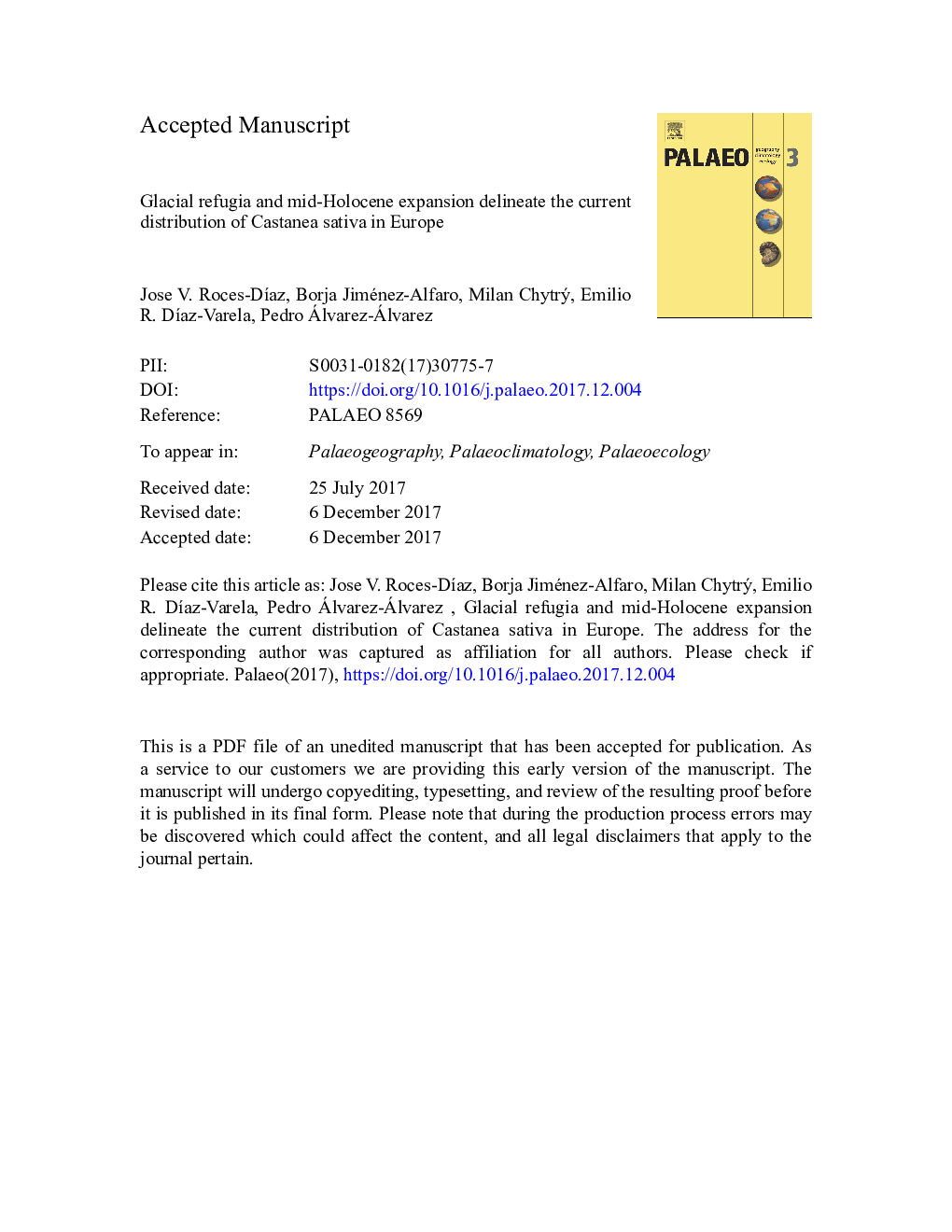| Article ID | Journal | Published Year | Pages | File Type |
|---|---|---|---|---|
| 8868418 | Palaeogeography, Palaeoclimatology, Palaeoecology | 2018 | 27 Pages |
Abstract
Areas of Quaternary refugia for tree species have been mainly delineated based on fossil records and phylogeography, but niche modelling can provide useful complementary information. Here we use palaeodistribution modelling to test the main hypotheses about the distribution of Castanea sativa in the Last Glacial Maximum (LGM) and the mid-Holocene in Europe. We computed distribution models for current climatic conditions using different methods, and projected them onto three climatic scenarios for the LGM and the mid-Holocene. The projections were validated with pollen and charcoal records. LGM refugia were suggested in the north of the Iberian, Italian and Balkan Peninsulas, and in northern Anatolia. The projections for the mid-Holocene indicated high climatic suitability and geographic expansion of the species range across southern Europe, including some areas where the species is nowadays considered as non-native. In general, our models are consistent with the patterns proposed with pollen and charcoal records, and partially also with phylogeographic information inferred from genetic data, suggesting that the most suitable areas for C. sativa were extended significantly during the mid-Holocene, but declined afterwards and lost connectivity. The projected patterns were compatible with existing palaeobotanical records of C. sativa and provide a spatially-explicit picture of the species past distribution.
Keywords
Related Topics
Physical Sciences and Engineering
Earth and Planetary Sciences
Earth-Surface Processes
Authors
José V. Roces-DÃaz, Borja Jiménez-Alfaro, Milan Chytrý, Emilio R. DÃaz-Varela, Pedro Álvarez-Álvarez,
